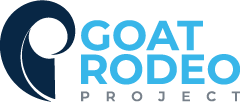How organizations should redesign work to create the flexibility and empowerment people are searching for
It’s worth repeating that the world of work is changing in front of our eyes. It seems an obvious thing to say based on our recent experiences, but I still see far too many leaders not embracing the opportunities that exist in this new work order.
One perfect example of this is the tension that exists around the return to the office. You have employees on one side who are looking to maintain the flexibility they have enjoyed for the last two years and leaders on the other who don’t trust people to be productive when they are not under their watchful eye and are looking to get people back to the office.
Of course, I am painting a picture to make a point and many employers are tinkering around with the messy middle, but these extremes do exist. For example, I recently spoke with a leader who was attempting to appease her CEO, who was calling her from his home office in Texas, oblivious to the irony of him demanding that everyone return to the Canadian office.
This return to office debate centres around the balance of freedom and ultimately the where of work.
In reality, the considerations are much broader and extend to when, why, with whom and how the work gets done.
We have recently seen the word freedom being misused by many an ill-informed activist, and you could still argue that this context of freedom at work is somewhat trivial when compared with the core freedoms we enjoy from living in a democratic society, but we can still draw parallels.
In 1958, the philosopher Isaiah Berlin identified two types of freedom. He called one negative liberty that he described as freedom from barriers and intrusion by other people. The alternative was positive liberty – freedom to build your own life. If we want to create freedom at work, we need to increase the level of both positive and negative liberty.
This thinking is consistent with research from the Mayo Clinic cited in Marcus Buckingham’s new book Love + Work that suggests the proportion of work we love can be as low as 20% to keep us feeling engaged and resilient.
As a solopreneur, I don’t take for granted the freedom I have to choose the work that I do, the people I work with and when the work gets done. I feel guilty on occasion then realize it’s something I have chosen (along with the downsides I am still to find) and in some ways earned having spent 28 years dancing to many corporations’ tunes.
Working for yourself represents just one route to destination freedom. There are many other options depending on your unique situation, and I’d recommend doing the reflection and soul-searching to find the best one for you.
For organizations, they have an important role to play to enable the freedom that people are searching for. And while yes, the options are much broader than determining where the work gets done, it’s fair to say that if they botch that decision, they will struggle with the aspect of when, with whom and how.
People want freedom, and organizations have the opportunity to redesign the work around fundamental elements of positive and negative liberty to create more engaging and interesting places to work.

